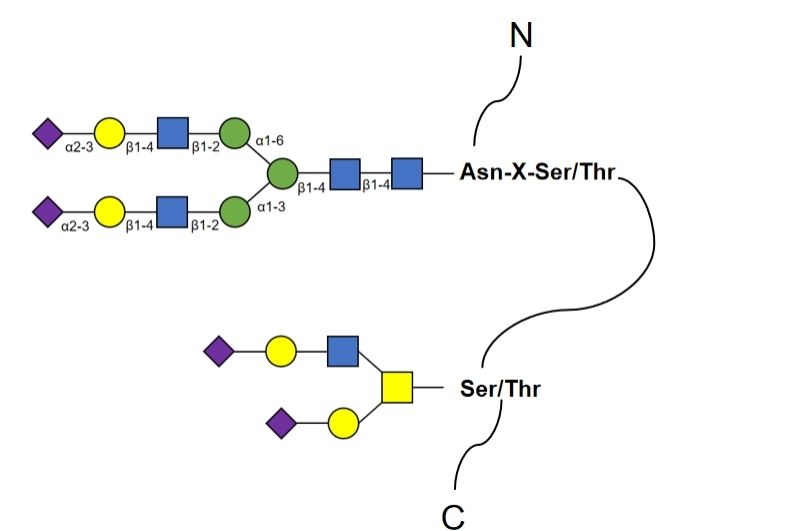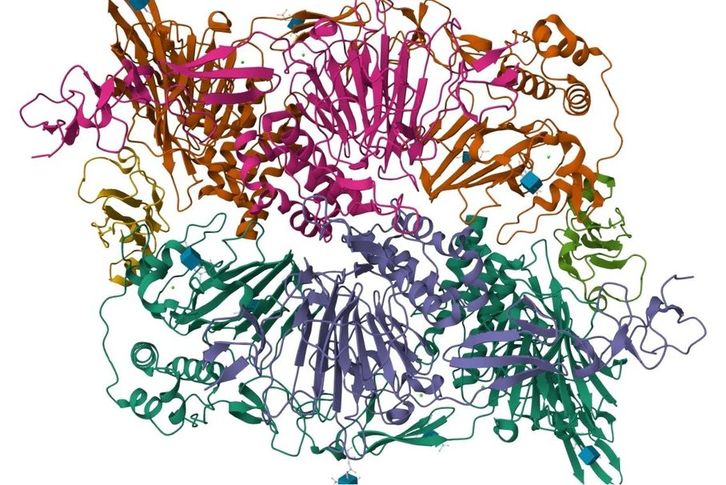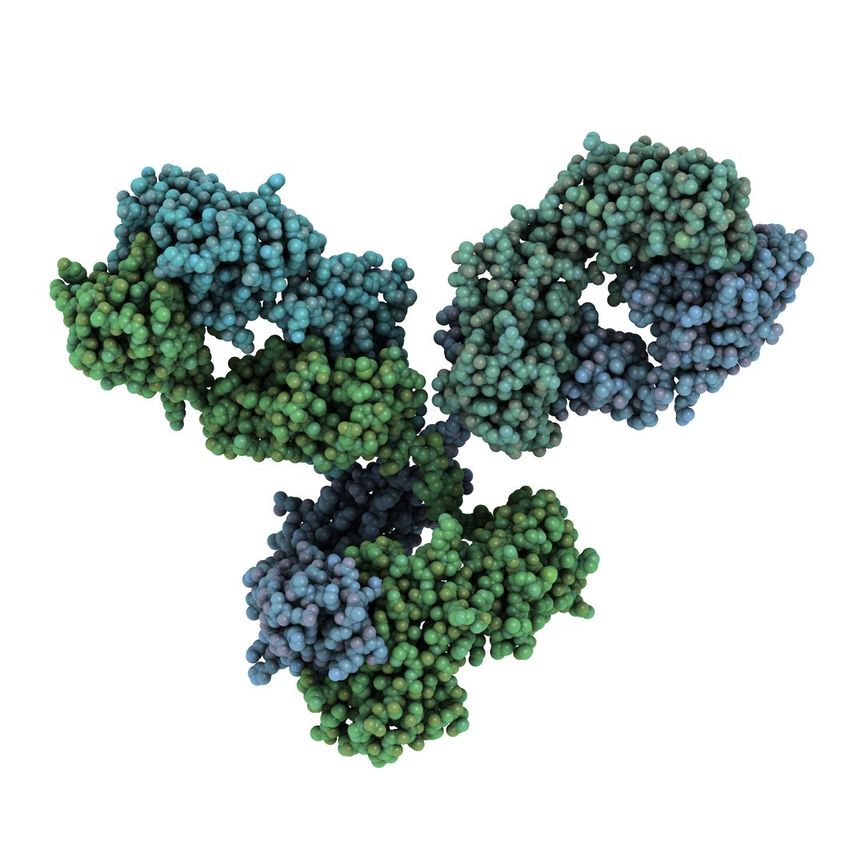Glycoinformatics-assisted Immune System Glycomics Analysis Service
Unveiling the Sweet Secrets of Immune System Glycomics with Glycoinformatics
The human immune system functions mainly through glycan-protein interactions, and glycosylation plays an important role in the intercellular communication of the immune system, thus abnormalities in glycans in autoimmune diseases become biomarkers for diagnosis and prognosis. As a company specializing in glycobiology research, CD BioGlyco has mastered the advanced knowledge of Glycoinformatics and biology and provides clients with a comprehensive and systematic immune system glycomics analysis service with glycans in the immune system as the research target.
The synthesis mechanism and structure of glycans can have different effects on the immune system, and different types of glycosylation modifications regulate immune cell transport, synapse formation, activation, and survival during processes such as immune responses. Here, we analyze them from a variety of perspectives.

- We utilize lectin microarray technology in conjunction with an existing database of glycan structures to rapidly analyze glycan epitopes and directly observe N-linked and O-linked glycans, glycolipids, and endogenous glycoconjugates in immune cells. Abnormal glycosylated molecules can be efficiently mined using this method, which can be used to elucidate regulatory changes in the immune system.
- For the released glycan chains, we utilize chromatographic or mass spectrometric (MS) for purification and analysis.
- Micro-glycan chains can be analyzed directly by high-performance anion-exchange chromatography (HPAEC) with pulsed amperometric detection for structural analysis, as well as qualitatively and quantitatively by online coupled MS.
-
In addition, HPAEC coupled with pulsed amperometric detection can also be used for the analysis of the monosaccharide composition of glycans on the surface of immune cells.
- Glycans can also usually be directly structurally characterized using MS and the link between mass and composition can be accurately established.
- Typically, rapid analysis can be achieved by matrix-assisted laser desorption ionization time-of-flight MS (MALDI-TOF-MS). This method has the advantage of being fast, and simple and requires only a small amount of sample. In addition, ion fragmentation by electrospray ionization MS and collision-induced dissociation helps to achieve structural characterization of glycans.
- In the process of structural characterization, we use fluorescent labeling coupled with MS to decompose glycans into substructures and access the reference structures to be compared from the established glycan structure database (information on the biosynthetic network relationships among glycans) for substructure matching. In turn, the use of this substructural information enables the inference of glycan metabolic pathways and glycosylation mechanisms in the immune system, which supports the investigation of immune disease processes. On the other hand, the decomposition of each glycan sample into glycoconjugate structures also enables the rapid analysis of a larger number of glycoconjugate profiles.
Publication Data
Technology: MALDI-MS-based isotope labeling method
Journal: Frontiers in Chemistry
IF: 5.5
Published: 2021
Results: In this article, the authors developed an automated glycan quantification tool, gQuant, for performing glycomics analyses. gQuant is a MALDI-MS-based glycan isotope labeling method that enables rapid processing of mass spectrometry data of glycans for quantitative analysis of glycans. Experimental structures show that gQuant can automate glycan matching, calculations of glycan abundance ratios, and data output when glycan isotope interference is reduced to less than 1% when the isotope spacing is increased to more than 8 Da. Through a series of performance tests, the gQuant was found to successfully process sugar quantification data and report accuracy ratios. In addition, gQuant can be easily adapted to the quantitative analysis of other types of sugars, such as mucin-based O-glycans.
 Fig.1 Process of glycan analysis. (Huang, et al., 2021)
Fig.1 Process of glycan analysis. (Huang, et al., 2021)
Applications
- Glycoinformatics-assisted immune system glycomics analysis helps researchers research diagnosing and predicting diseases such as autoimmune diseases, infections, and tumors.
- Glycoinformatics-assisted immune system glycomics analysis helps scientists delve deeper into the metabolic pathways of glycans in the human immune system, laying the groundwork for the development of therapeutic approaches to immune diseases.
- The glycan structure of the immune system can be used as a biomarker, so performing immune system glycomics analysis can be used to characterize diseases or monitor the effectiveness of treatments.
Advantages
- Our service team has a deep background in glycoinformatics and biology to provide custom immune system glycomics analysis services according to our client's needs.
- We use the latest glycoinformatics tools and techniques to help clients perform immune system glycomics analysis, ensuring the accuracy and reliability of data processing and interpretation.
- Our team has a wealth of project experience and success stories, enabling us to better understand and interpret immune system glycomics data and provide our clients with more accurate analyses and recommendations.
Frequently Asked Questions
- Why is it important to research glycan molecules in the immune system?
- Glycan molecules play important roles in the immune system, influencing cellular interactions, signaling, and disease development. Understanding the structure and function of these glycosyl groups can help us better understand immune system function and disease mechanisms.
- What informatics techniques and tools are available for immune system glycomics analysis?
- These include tools such as MS, nuclear magnetic resonance (NMR) techniques, glycomics databases, bioinformatics software, and algorithms. These tools can efficiently process and analyze the glycomics data in the immune system, help researchers process, annotate, and visualize the glycomics data, as well as help researchers perform data mining and pattern recognition.
CD BioGlyco is a biological company that has mastered advanced glycoinformatics technology and always puts the needs of our clients at the forefront of our efforts to provide custom Glycomics Solutions and Services. Our team members work together and collaborate to ensure smooth and successful immune system glycomics research projects. If you still have questions about the field of glycomics analysis, please feel free to contact us and we will respond to you promptly and efficiently.
Reference
- Huang, J.M.; et al. gQuant, an automated tool for quantitative glycomic data analysis. Frontiers in Chemistry. 2021, 9: 707738.
For research use only. Not intended for any diagnostic use.
Quick Links
Related Services



 Fig.1 Process of glycan analysis. (Huang, et al., 2021)
Fig.1 Process of glycan analysis. (Huang, et al., 2021) 


